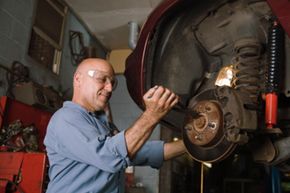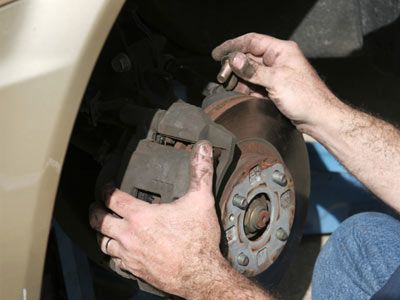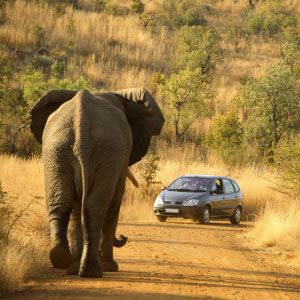If you're like most drivers, you don't think about your brakes until they stop working (and hopefully you're not careening down a mountain road when this happens). But, if you're smart, you'll take good care of your brakes. You'll replace the pads and resurface the rotors as needed. Still, when your mechanic recommends that you get your brake system flushed, do you think you should you do it or save the cash?
Do it.
Advertisement
Braking systems aren't indestructible. Parts, like the rubber in the valves in the master cylinder, calipers and wheel cylinders deteriorate. All the nasty little bits that flake off end up in your brake fluid. Plus, the fluid itself can get old and worn out. Moisture can also get in the system. That leads to rust, which leads to more nasty bits in your brake fluid. All this adds up to a brake system with compromised effectiveness and decreased stopping power.
Think of it this way: You wouldn't skip changing your car's engine oil, right? It's the lifeblood of your engine, and when it gets contaminated by impurities, you put the entire engine at risk. It's the same with brake fluid. Let it get dirty and you won't be able to stop as well. So while it may not seem like a big deal when you're standing at the service desk and the mechanic asks if you want him to flush your brakes, but when you're careening down that mountain road, you'll understand why it's an important part of vehicle maintenance.
A good rule of thumb is to have your brakes flushed about every 30,000 miles (48,280 kilometers) or so. Note that brake flushing and bleeding the brakes are two different procedures. Brake flushing involves removing all the brake fluid from the system and getting all-new, clean fluid inside. Brake bleeding just means removing enough brake fluid to get air bubbles out of the brake lines. So, make sure you get your brakes flushed regularly.
And, if you ever notice your car or truck has decreased stopping power, have it inspected by a certified mechanic right away -- even if you're not planning a drive in the mountains.
Advertisement



